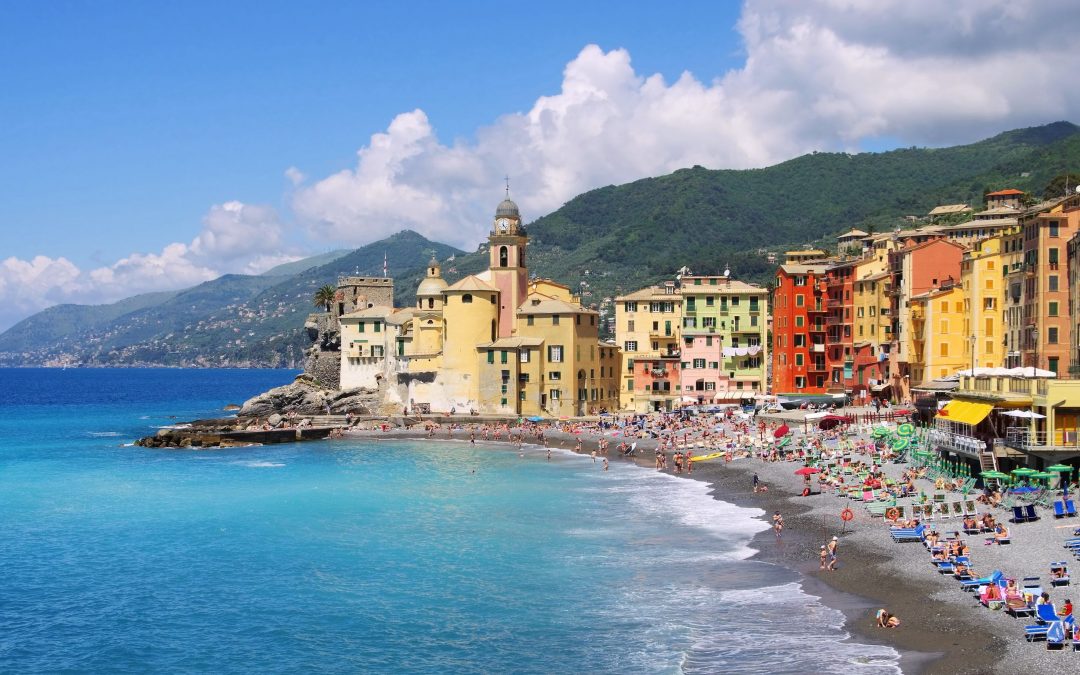Discover the Colourful Little Fishing Port of Camogli

September 25, 2017
In this blog we discover the colourful little fishing port of Camogli.
Tall colourful houses look out to sea and were originally all painted different colours so that the fisherman could recognize their homes while out fishing. In fact, the men were away at sea so much that Camogli actually means ‘the wife’s house’; ca means ‘house’ in dialect and moglie means ‘wife’ in Italian.
Camogli is one of my favourite towns in Liguria. It is set in a steep bay and has a good sandyish pebble beach that is free and there is a lovely little harbour, all making it a great place to base yourself on holiday. It has the added bonus of being right next to the Portofino promontory, which is one of the most beautiful places in Liguria.
The big event is the Sagra del Pesce on the second Sunday in May, when vast quantities of fish are fried in a giant, 4m wide frying pan, the biggest in Italy. The festival is not as old as it looks and began in 1952. It commemorates a night during World War II when the town was starving and the fisherman had not been able to put to sea because of German mines, but the situation was so dire that they set sail anyway. Prayers were offered to San Fortunato and the men returned with a massive catch. There is a huge firework display the night before. The Camogliesi are fed first, then any leftovers go to the hungry tourists. Look out for the giant pan hanging on the wall as you walk into town.
From the Middle Ages to the end of the 19th century and the coming of steam ships, Camogli was a bustling seaport, known as the ‘city of a thousand white sails’, and its harbour was crammed full of famous tall ships. The fleet was rented out to anyone who had the money to pay for it, and in 1805, it fought alongside Napoleon in the Battle of Trafalgar. When Dickens visited in 1845, he found it ‘the saltiest, roughest, most piratical little place’. The nautical tradition continues and the town is home to an important maritime college.
